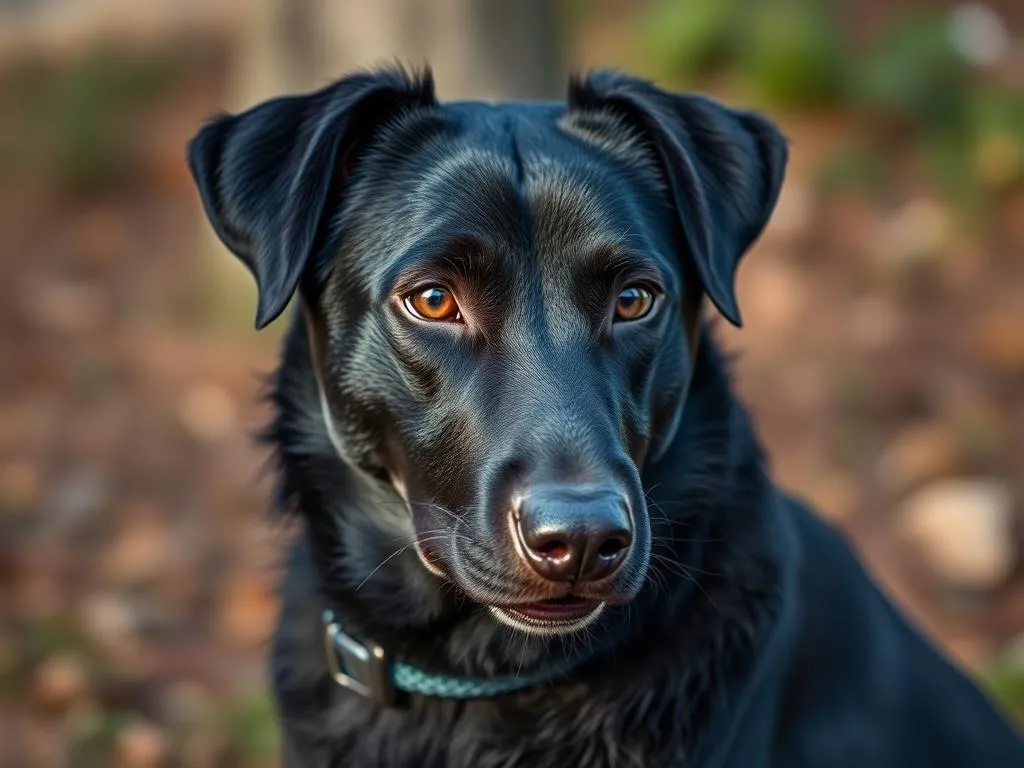
It’s a heartbreaking reality that black dogs face a significant disadvantage when it comes to finding forever homes. Studies indicate that black dogs are often overlooked, with some shelters reporting that they can stay in the system three times longer than dogs of other colors. But why is this the case? Understanding the underlying factors can help us better advocate for these deserving animals.
Historical Context
The Origins of Color Preference in Pets
Throughout history, certain dog breeds and colors have been favored over others. This preference is often influenced by cultural perceptions and historical narratives. For instance, the image of a noble golden retriever or a playful beagle often overshadows that of a black dog. In many cultures, especially in the West, lighter-colored animals are typically associated with purity and goodness, while darker hues may invoke feelings of fear or mistrust.
In addition, the breed’s historical significance plays a role. Breeds like the Labrador Retriever and Golden Retriever are popular for their friendly demeanor and working capabilities, overshadowing the equally lovable black dogs like the Labrador’s black coat counterparts. Such preferences have led to a long-standing bias within pet adoption practices.
The ‘Black Dog Syndrome’
The term Black Dog Syndrome refers to the phenomenon where black dogs are less likely to be adopted compared to dogs of other colors. This syndrome isn’t just anecdotal; it has been recognized in shelter practices. Shelter workers and volunteers often note that potential adopters gravitate towards lighter-colored dogs, sometimes even subconsciously. This leads to a cycle where black dogs continue to languish in shelters, waiting for a chance at a loving home while other colors get adopted quickly.
Psychological Factors
First Impressions and Aesthetic Appeal
When it comes to pet adoption, first impressions matter significantly. Research shows that the color of a dog can heavily influence perceptions of beauty. Lighter-colored dogs often stand out in a shelter environment, catching the eye of potential adopters more quickly than their black counterparts. This phenomenon is further exacerbated by the aesthetics of photography; black dogs can appear less distinct in photographs, making them harder to market effectively online.
Studies have demonstrated that the initial emotional reaction to an animal can lead to adoption decisions. Dark coats can sometimes be perceived as less inviting or friendly, especially in environments where emotional connections are crucial for adoption.
Cultural Stereotypes and Misconceptions
Cultural stereotypes play a significant role in the adoption process. Black dogs are often associated with negative connotations. From folklore to popular media, black animals have been unfairly portrayed as ominous or unlucky. For example, many people hold onto superstitions that black dogs bring bad luck, leading to an inclination to overlook them in favor of more “favorable” colors.
Anecdotal evidence and surveys indicate that many people may not even realize they are making decisions influenced by these biases. Because of these ingrained beliefs, black dogs often find themselves at a disadvantage in the adoption arena.
Practical Considerations
Visibility and Photography
Visibility is a crucial factor when it comes to black dog adoption. In shelters, darker-colored dogs can blend into their surroundings, making them harder to see for potential adopters. The stark contrast of lighter colors against the often drab backgrounds of shelters draws attention away from black dogs.
Moreover, the challenges of photographing black dogs cannot be overstated. Many shelters rely heavily on online platforms to showcase their available pets, but capturing a good photo of a black dog can be tricky. Poor lighting and camera settings can wash out the dog’s features, making them appear less appealing in pictures. This visual bias can significantly affect their chances of adoption.
Breed and Size Factors
The popularity of certain breeds also intersects with coat color. Many of the most popular dog breeds tend to come in various colors, but lighter shades often dominate the adoption scene. For instance, while black Labrador Retrievers are incredibly common, the golden variation tends to be more sought after due to cultural preferences.
Size also plays a role; larger black dogs may be perceived as more intimidating compared to smaller dogs, which can discourage adoption. The combination of these factors creates a complex landscape where black dogs face multiple hurdles in gaining visibility and appeal.
Solutions to Promote Black Dog Adoption
Marketing Strategies for Shelters
Animal shelters have begun adopting innovative marketing strategies to combat the challenges faced by black dogs. For instance, using bright and engaging photographs that highlight the dog’s personality can make a significant difference. Showcasing these dogs in action, whether playing fetch or enjoying belly rubs, can help potential adopters see beyond their coat color.
Success stories from shelters that have implemented these strategies show promising results. For example, some organizations have designated special adoption events for black dogs, offering reduced fees and incentives to encourage adoption. These targeted campaigns can help shift public perception and increase the visibility of these wonderful animals.
Community Engagement and Awareness Campaigns
Community engagement is key to changing the narrative around black dog adoption. Local events, such as “Black Dog Day,” can help raise awareness and celebrate these dogs. Engaging with local media, schools, and community groups can amplify these messages, helping to dispel myths and highlight the unique qualities of black dogs.
Social media platforms have also proven to be invaluable tools in changing perceptions. Campaigns showcasing the loving nature of black dogs, paired with testimonials from happy adopters, can significantly influence potential adopters’ attitudes. The power of storytelling can bridge the gap between perception and reality, encouraging more people to consider adopting a black dog.
Personal Stories and Testimonials
Success Stories of Black Dog Adoptions
Real-life accounts from families who have adopted black dogs can inspire others to consider these often-overlooked pets. Take the story of Lucy, a black lab mix who had been in a shelter for nearly a year. When her new family adopted her, they were amazed by her intelligence and gentle demeanor. Lucy quickly became a beloved family member, proving that color is far less important than personality.
These success stories highlight the joy and enrichment that black dogs bring into their owners’ lives. They serve as powerful reminders that every dog, regardless of color, deserves a chance at love and companionship.
Voices from Animal Shelters
Insights from shelter workers provide a unique perspective on the challenges and triumphs of black dog adoptions. Many shelter employees express frustration over the biases that black dogs face but also share heartwarming stories of successful adoptions. One shelter worker noted, “It’s always a joy to see a black dog find a home. It’s like watching a miracle happen.”
These professionals understand the complexities surrounding adoption and often work tirelessly to change perceptions. Their passion and dedication are crucial in the battle against Black Dog Syndrome.
Conclusion
The reasons behind the lower adoption rates of black dogs are multifaceted, ranging from historical biases to practical considerations such as visibility and breed popularity. However, understanding these factors is the first step towards creating solutions that can help these dogs find loving homes.
Encouragingly, with effective marketing strategies, community engagement, and storytelling, we can help shift perceptions and promote the adoption of black dogs. It’s essential to look beyond color and recognize the individual personality and loving nature that each dog brings to a family.
By sharing this knowledge and advocating for black dogs, we can contribute to a future where every dog, regardless of color, has the chance to be part of a loving family. Together, we can change the narrative and ensure that black dogs receive the love and homes they truly deserve.









